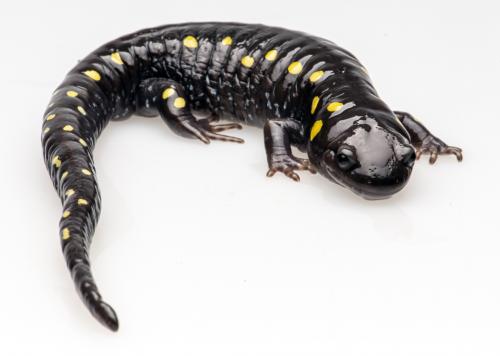
Salamanders are secretive, harmless creatures. Their permanent smiles and delicate little toes will win your heart once you take that first curious look.
It’s not uncommon to mistake a salamander for a lizard, but there a few differences. Salamanders are tailed amphibians, and Nova Scotia does not have any wild species of lizard. Salamanders have smooth, moist skin, and they’re unable to bite.
Salamanders are common. There are approximately 600 known species around the world, and Nova Scotia is home to five of them. Salamanders can be seen in the spring during breeding season, after hibernation.
Their diet consists of various insects, worms, snail, spiders and slugs. They use sight and smell to find prey. Salamanders make no sounds and cannot hear, instead, they feel vibrations in the ground with their front legs and lower jaw.
Mating Season
In the spring, yellow-spotted and blue-spotted salamanders gather in woodland ponds or roadside ditches to breed. Males court females with an underwater display. The male then places a small white package of sperm (called a spermatophore) near a female. If she is interested, she will take the spermatophore and hold it in her abdomen until she is ready to lay the eggs. Newts will also breed in ponds, but red-backed salamanders and four-toed salamanders lay their eggs on land. Salamander larvae are slimmer than frog tadpoles, with flattened heads and feathery external gills - a respiratory organ located on either side of the head.